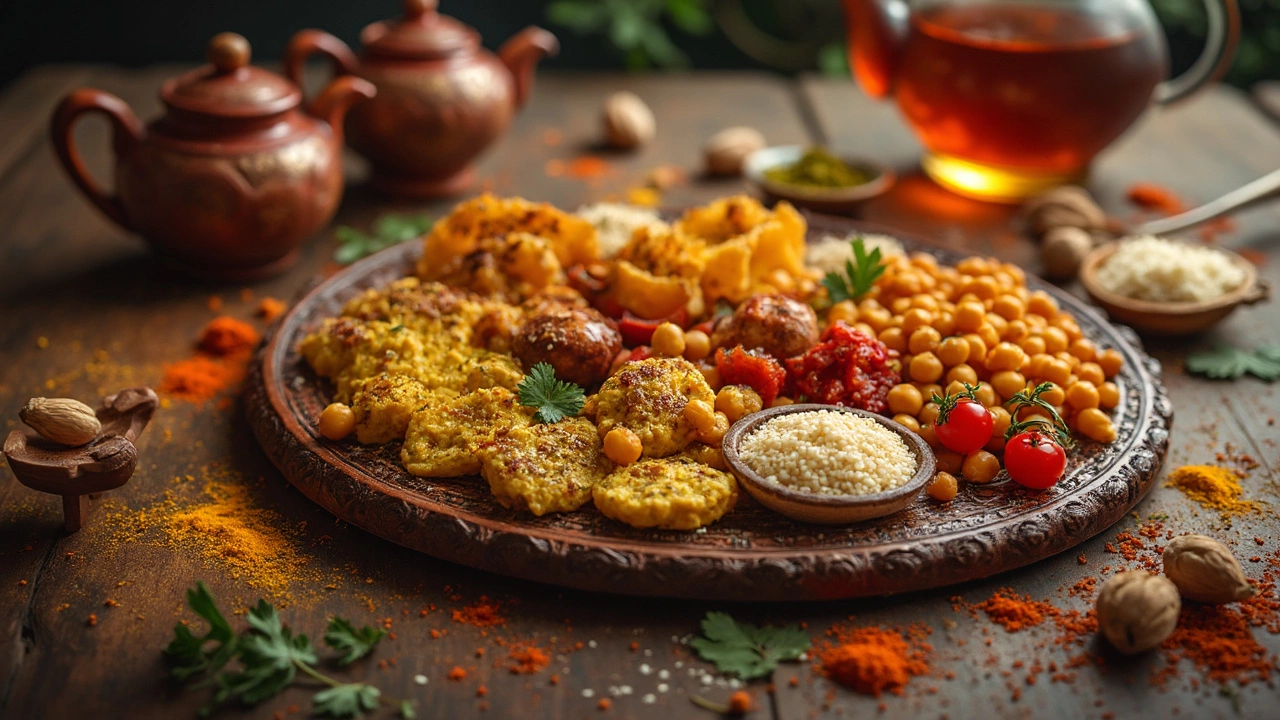Nutritious Indian Food Made Simple
India’s kitchen is famous for bold flavors, but you can keep those flavors while staying light. On this page we gather the best tips, swaps, and recipes that let you eat Indian food without the guilt. Whether you’re after a low‑calorie curry or a healthier take on a favorite sweet, the ideas below work for anyone who loves taste and wants to stay fit.
Smart Swaps for Everyday Cravings
Craving a crunchy snack? Our guide on the "healthiest junk food" shows you which store‑bought bites have the least sugar and sodium, plus portion sizes that fit a balanced diet. Swap deep‑fried samosa shells for baked filo or use air‑fried cauliflower for a crispy bite that still feels indulgent.
If you love Indian sweets, the "healthy Indian sweet" article breaks down low‑GI options like jaggery‑sweetened payasam, and shows how to halve the sugar in gulab jamun without losing that melt‑in‑your‑mouth feel. The portion charts help you enjoy a treat without spiking your blood sugar.
Low‑Calorie Curries and Snacks
Weight‑loss seekers can turn to our "best Indian curries for weight loss" list. Swap heavy cream in korma for blended cashew paste, and use plenty of fresh tomatoes in tomato‑onion gravy to keep calories low while the taste stays rich. Adding vegetables like spinach or zucchini bulks up the dish without extra calories.
For quick meals, try the "quick and healthy breakfast ideas" that feature poha with mustard seeds, a dash of turmeric, and a handful of peas. It’s a protein‑packed start that keeps you full until lunch.
Even classic biryani can be nutritious. Our "is biryani hard to cook" and "why is biryani so delicious" posts reveal how to use brown basmati, reduce oil, and layer veggies with lean chicken or tofu. The result is a fragrant rice dish that feels indulgent but stays balanced.
Don’t forget chutney. While the "disadvantages of chutney" article warns about excess sugar, the "best ways to eat chutney" guide suggests pairing a small spoonful with grilled paneer or roasted veggies to add flavor without overloading on carbs.
For those watching blood sugar, the "is tandoori chicken safe for diabetics" post outlines how grilling over charcoal locks in protein while keeping the dish low in carbs. Use a spice rub with smoked paprika, cumin, and a pinch of salt for a smoky bite.
Finally, a few cultural nuggets keep things interesting. Learn why certain Indian sweets are tied to festivals in the "why do Muslims love sweets" article, or why Hindus avoid pork in the "why do Hindus not eat pork" piece. Understanding the why can help you make informed, respectful food choices.
All these tips are designed to help you enjoy Indian flavors without compromising health goals. Pick a recipe, try a swap, and see how easy it is to keep your meals both tasty and nutritious.
Healthy Indian Snacks to Satisfy Your Cravings
India offers a delightful variety of healthy snacks that keep your taste buds happy without compromising nutrition. From chickpea-based dishes to millet wonders, these snacks are as nutritious as they are flavorful. The vibrant spices not only add taste but also bring health benefits. Whether you're looking for something to munch on during tea time or a filling option on busy days, Indian snacks have got you covered.
Healthy and Filling Indian Snacks: Tasty and Nutritious Options
In the rich tapestry of Indian snacks, finding options that are both filling and healthy is an achievable and delightful endeavor. This article explores popular and traditional Indian snacks that offer nutritional benefits without compromising on taste. From protein-packed lentil mixtures to fiber-rich vegetable treats, discover how to make smart snacking choices. Enjoy recipes and tips that will help you strike the perfect balance between satisfying hunger and nurturing your body. Embrace the diverse flavors and textures that Indian snacks bring to your healthy lifestyle.

